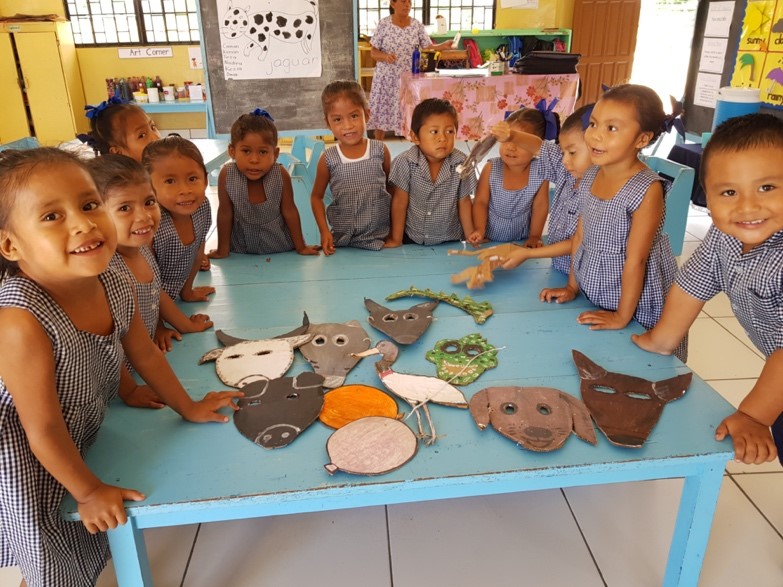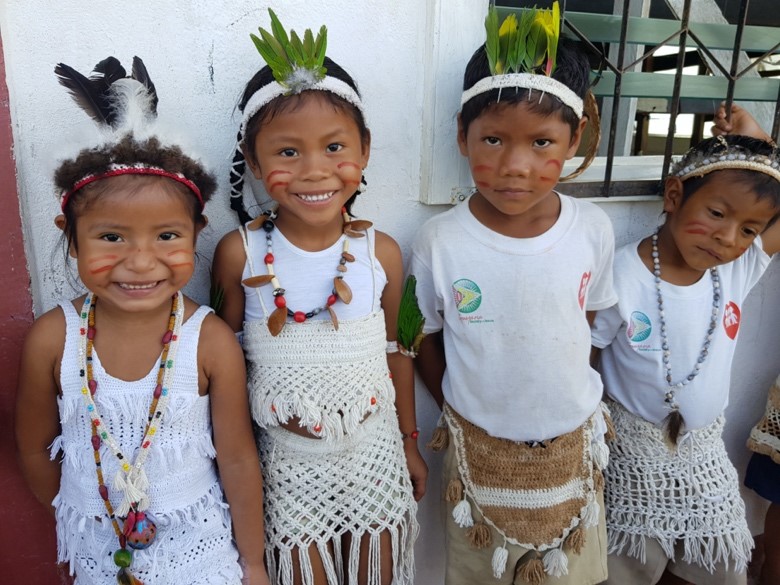Moulding the future generation…
By Lakhram Bhagirat
Our cultural identity is one thing we should all be proud of. It is the very fibre of our being that shapes us to go on and do tremendous things with our lives. The absence of our cultural identity leaves us feeling disconnected and forever wanting, so when we are taught to embrace that culture then we are forever in tune with our identity.
It is this very principle and the fact that the Wapichan people are losing their sense of culture that led to the development of the Quality Bilingual Education Programme for Wapichan Children (QBEP).
The programme is currently being piloted at three schools in the South Rupununi District, Region Nine (Upper Takutu–Upper Essequibo) – Maruranau, Sawariwau and Karaudarnau Nursery Schools.
The initiative was birthed through a collaborative effort of the Wapichan people, the Education Ministry and Jesuits in Guyana. The main goal of the programme is to provide a higher quality of education for Wapichan children.
Over the years, the Wapichan people have realised that the country’s education system focuses on universality of the processes and that it took the children away from the traditional aspect of their education, which is much more suited for their community life. In spite of the glaring isolation, the education system has also brought many advantages to the Wapichan communities.
In entering formal education, Wapichan children are cut off from their language which is their mother tongue. In addition to being cut off from what could be considered as the main fibre of their identity, the children are also deprived of their rich cultural experience and traditional knowledge because it is nowhere in the school’s curriculum.
The language of the Indigenous tribe is different from the State’s language – English. So when children from the communities enter into the government’s education system they are disenfranchised in more ways than one. In some cases, they have to learn English as their second language and all of the educational materials are printed in the State’s language which makes it even more important for the children to give up their mother tongue to conform to this new type of teaching.
With the help of the Jesuits, Wapichan communities identified their priority needs as education and the need to preserve their Wapichan identity. This was a result of low educational attainment in Wapichan communities and the decline of Wapichan language and culture.
Over the years, the Wapichan community observed that they took a beating when it came to the National Grade Six Assessment resulting in many of their children being robbed of the opportunity to be better prepared adults. The lack of that proper secondary education has led to a number of Wapichan youths leaving behind not only their communities but also their identity as a people.
The youths would usually go in search of employment and end up being exploited in the mining industry or move to neighbouring Brazil where they would take up low-paying jobs as labourers and domestic help so that they can sustain themselves.
In 2015, the Jesuits, after consulting with the Wapichan people about their priority needs, invited an Indian educationalist by the name of Manoj Kitta. Kitta came to Guyana and worked closely with several Wapichan communities to determine whether a bilingual education programme was possible. He focused heavily on the three communities where the programme is currently being piloted.
The key issue found by Kitta was that children were being educated in English-medium schools though their first language was not English. It was from these findings, that the idea of teaching children in their native Wapichan language was birthed. The programme is bilingual in the sense that it also introduces English into the classrooms.
In 2016, the proposed education programme was presented by local teachers and community members to the Commission of Inquiry of Education in Aishalton where it was well-received. Initially in 2017, Kitta guided a resource team of 30 artists, teachers and leaders from the three pilot communities. That team would go on to develop the teaching materials that teachers and children now use in the pilot nursery schools.
The programme was officially introduced in September of 2018 following intense discussions among the Education Ministry, the National Centre for Educational Resource Development (NCERD) and the communities. Additionally, a two-year Memorandum of Understanding (MoU) was signed to pave the way for the implementation of the programme, which has seen significant improvement in the morale of Wapichan students since its implementation.
The programme is spearheaded by a local team of three: Silverius Perry – Administrative Coordinator, Leah Casimero – Academic Coordinator (Wapichan) and Marva Hawksworth – Early Childhood Consultant.
Perry explained to Sunday Times Magazine that a key aspect of the programme is the inclusion of Wapichan language and culture. He noted that teachers of pilot schools are given the freedom to explain concepts bilingually to their students when necessary.
“If those children who enter nursery school, Wapichan speakers, have problems the teachers can speak to them in Wapichan,” Perry explained. “And those children who speak English, the teachers have to speak to them in English so that they [can] be comfortable in school.”
The programme also uses Wapichan storybooks created by local resource team members. In addition, every Friday children wear their traditional clothing to school as part of building their identity. Another key aspect of the programme is the inquiry-based learning approach being used in the pilot schools to attain the Ministry’s national nursery standards.
“Teachers just step back and guide the children so that they can discover for themselves what learning is,” Perry stated. He went on to relate that teachers have told him about the significant changes they have seen in their young charges for the first time in their teaching career.
After the pilot phase ends in July this year, the bilingual education team, along with NCERD/MoE, will evaluate the programme. The results have been promising thus far.
While not an educator himself, Perry related that he has had some positive experiences over the past two years working with teachers, parents, and children.
“There is significant, visible evidence of this programme working for the teachers, for the children, for the parents. We need to prepare children for life, not just passing Grade Six exams or CSEC exams. Education has to work for our children so that we can contribute meaningfully to our community and our country,” he said.
Perry further explained that parents have been heartened by the fact that their children from the pilot schools often return home to share their learning experiences, Wapichan stories, and songs – something that had been non-existent with their older children.











